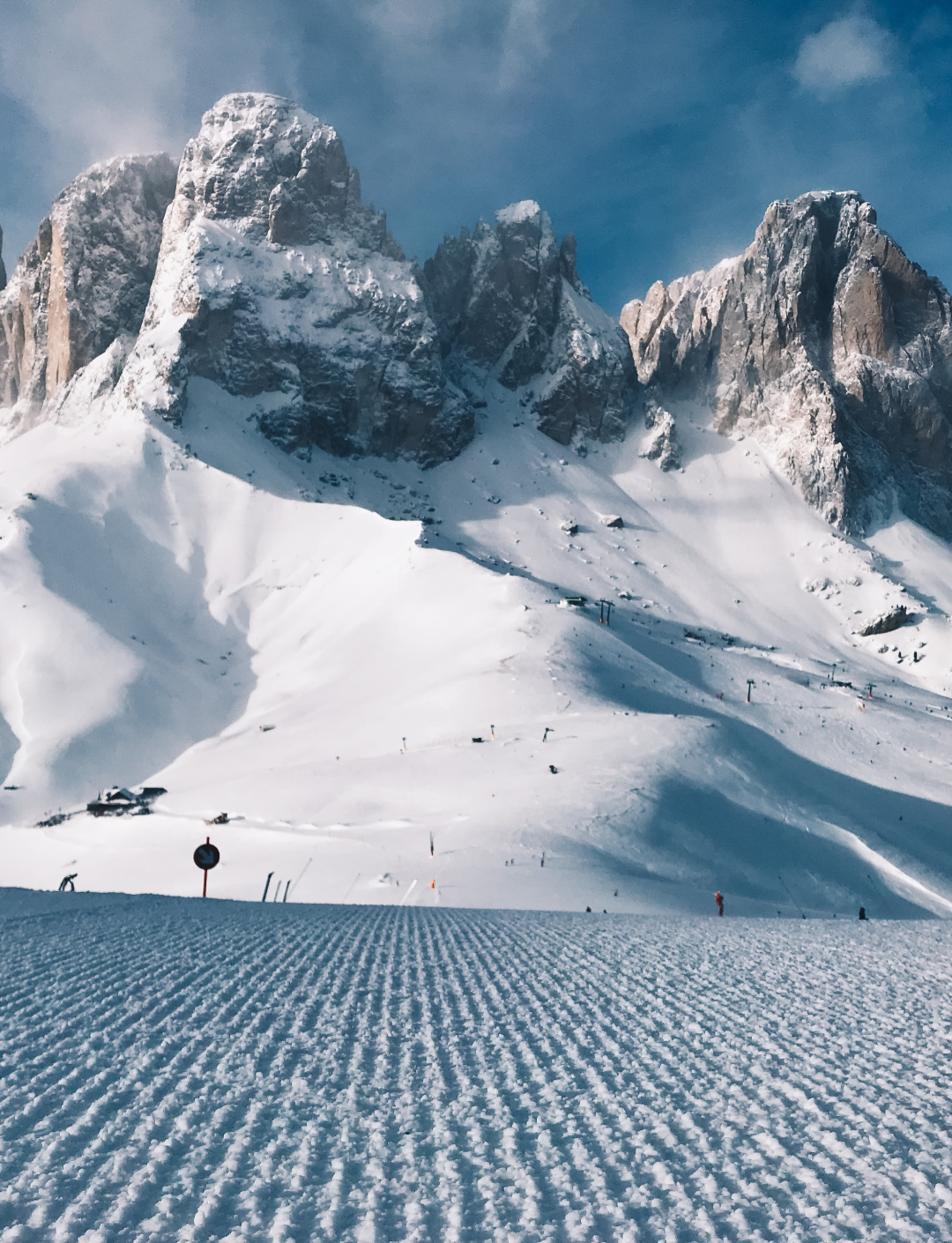If you’re new to skiing or boarding, it can sometimes feel like drinking from a fire hose. There’s so much learn when it comes to technique, finding your way around mountain, snow conditions, etc. As if that weren’t already enough, you have to figure out what to wear! Winter sports require specific clothing, and determining what you need can feel like a black diamond run in and of itself. Fear not! We’ve compiled a comprehensive guide to help ensure you’re comfortable and cozy on the slopes (and you’ll end up looking great too). Read on to learn everything you need to shred with style!
Base Layer

We all know the importance of starting with a good foundation (cue “Bones” by Marren Morris). It’s no different with ski and snowboard gear. A good base layer, which is the innermost part of your ski ensemble closest to your skin, plays an integral role in keeping you warm and dry on the mountain. A base layer’s primary purpose is to wick away moisture and regulate your temperature. Different base layers will offer a varying levels of insulation and breathability, so you’ll want to choose one most appropriate for the conditions you plan to ride in (i.e. colder conditions, more insulated, etc.). Base layers are often made with either Merino Wool or synthetic materials. Wool is popular for its warmth and odor-resistance, while synthetic fabrics are often more durable and budget-friendly. When it comes to sizing, you’ll want a base layer that has a snug fit without being too tight or restrictive. Want to see some examples of base layer options? Check out the following links.
Socks

Who let the dogs out? Not you, because those toes of yours will soon be tucked away in some warm and comfy socks! The lowly sock may often be overlooked, but a good sock is more important than you might think. When you’re in the market for new ski or snowboard boots, it’s not a bad idea to find some socks you love first so that you have them to wear when trying boots on. Similar to base layers, ski socks are made with either wool or synthetic fabric. Considering wearing some cotton socks for your day on the slopes? Don’t do it. Cotton won’t wick away moisture the way these other materials will, and your feet will be left feeling wet and cold. You’ll also want to make sure that your socks fit correctly. Maintaining good circulation in your feet is an essential part of keeping them warm, so avoid socks that are too tight and make sure there’s no bunching or slipping going on. Finally, if your feet get cold easily and you’re feeling extra fancy, you can also look into heated socks! Peruse our selection of socks below.
Gloves/Mittens
Gloves and mittens offer different benefits and at the end of the day it just comes down to personal preference. As a general rule, gloves offer more dexterity while mittens tend to keep your hands warmer (since they allow all the body heat from your fingers to be concentrated in one place). You also have options when it comes to the insulation in your gloves/mittens. Down insulation is the warmest choice, but it tends to be a little more pricey and is basically useless when it gets wet (i.e. if you get snow inside your glove). Synthetic insulation, such as PrimaLoft and Thinsulate, will retain warmth even when wet and can be more cost-effective. When determining a good fit for a glove or mitten, keep these pointers in mind:
- Gloves or mittens should feel snug but not tight enough to crush the insulation when you make a fist.
- When your fingers are fully extended, they shouldn’t touch the tips of the gloves. Aim to have a little extra room- just enough to pinch some fabric above your fingertips.
- Your entire palm should sit inside the cuff to ensure that your wrists stay covered and warm.
Lastly, wearing an inner liner with your gloves or mittens can add an extra layer of warmth. A liner can also be helpful if you need to remove your outer glove for any reason as it prevents you from being directly exposed to the cold.
Give these links a look and find your perfect pair of gloves or mittens!
Jacket

A good jacket is one of the most important elements of your ski/snowboard attire. Jackets designed for winter sports have specialized features, setting them apart from your run-of-the-mill coats. Key elements of many ski jackets include waterproof/water-resistant materials, a helmet-compatible hood, wrist gaiters, and a powder skirt. The wrist gaiters and powder skirt help prevent snow from going up your sleeves or inside your jacket, while the helmet-compatible hood keeps your head and neck dry even when it’s actively snowing. Many ski jackets also have ventilation systems, allowing you to unzip certain areas of the jacket and thus increase airflow when you need to cool down. When making your jacket selection, keep in mind the conditions you’ll spend most of your time skiing in. This can help you determine if you should opt for a hard shell or insulated jacket. If a hardshell jacket is your preference but you’ll be skiing in cold weather, you’ll want to be extra sure that you have room to layer up underneath the jacket. Ultimately, make sure that the jacket is comfortable, non-restrictive, and that it won’t overly compress the layers you’ll wear underneath it. Finding something that looks fantastic doesn’t hurt either. Links below!
Pants/Bib

To bib or not to bib, that is the question. In recent years, bibs (which are basically overalls tripped out for the snow), have grown in popularity. There are pros and cons to both bibs and pants. Bibs offer increased warmth, better coverage, and more pockets. They prevent snow from entering your waistband, and the extra material on your torso lends additional warmth. However, bibs can make bathroom breaks more complicated unless they sport a drop-seat or other similar feature. If you run warm, pants may be a good choice as they don’t have the added material over your upper body. Pants are also easier to put on and take off.
Regardless of whether you opt for a bib or for snow pants, there are some key characteristics you’ll want to look for in both. These include things like ventilation, snow gaiters, and reinforced cuffs (especially important for skiers, to ensure that the edges of your skis don’t wear out the bottom of your pants). In addition, you’ll want your pants or bib to be waterproof for when you fall (it’s bound to happen- we’ve all been there). As with jackets, you can choose between insulated or hardshell pants/ski bibs. When looking for the best fit, ensure that there is enough room for layering underneath (although you won’t need quite as many layers here as you will under your jacket). At the end of the day, freedom of movement and comfort are the name of the game.
Follow the links below to see some examples of pants and bibs.
Additional Resources
Want a deep dive into one of the above categories? Check out these resources for even more tips.
- The Trek- Merino Wool vs. Synthetic Base Layers
- REI- How to Choose Ski and Snowboard Socks
- REI- Snow Gloves and Mittens: How to Choose
- Helly Hansen- How to Choose a Ski Jacket
- Columbia- Ski Pants Vs. Bibs




